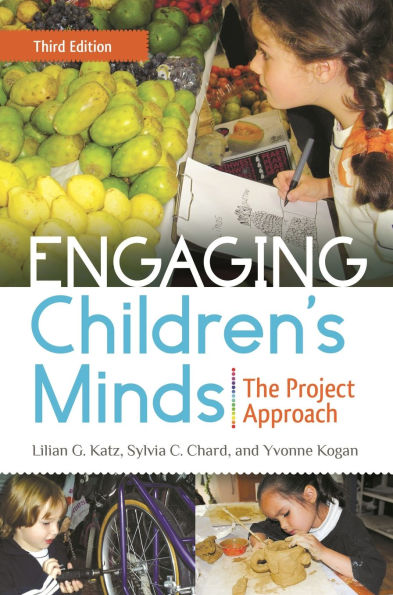Engaging Children's Minds: The Project Approach
Now in its third edition, this book shows teachers how to incorporate the Project Approach into early childhood curricula, engaging children intellectually and heightening their capacities for thinking, hypothesizing, reasoning, and expressing their natural curiosity.
Why has the Project Approach proven to be so successful for engaging young children intellectually and supporting their capacities to think, predict, hypothesize, reason, and express their natural curiosity? Simply put, because project work provides meaningful contexts in which young learners can readily apply and grasp the usefulness of their growing academic skills. This book provides a brief history and overview of the Project Approach and a thorough explanation of how to implement this method for best effect in a wide range of educational contexts.
Intended for those who work with young children as well as caregivers and students in training to do so, readers will understand how to apply this approach in order to gain the interest of children and facilitate their mental growth. The book's chapters articulate the process and benefits of the project approach, identify and detail the three typical phases of project work, and provide specific suggestions for implementing each stage. The importance of documentation of the children's work to record the story of their investigation and findings is also discussed.
1116793562
Why has the Project Approach proven to be so successful for engaging young children intellectually and supporting their capacities to think, predict, hypothesize, reason, and express their natural curiosity? Simply put, because project work provides meaningful contexts in which young learners can readily apply and grasp the usefulness of their growing academic skills. This book provides a brief history and overview of the Project Approach and a thorough explanation of how to implement this method for best effect in a wide range of educational contexts.
Intended for those who work with young children as well as caregivers and students in training to do so, readers will understand how to apply this approach in order to gain the interest of children and facilitate their mental growth. The book's chapters articulate the process and benefits of the project approach, identify and detail the three typical phases of project work, and provide specific suggestions for implementing each stage. The importance of documentation of the children's work to record the story of their investigation and findings is also discussed.
Engaging Children's Minds: The Project Approach
Now in its third edition, this book shows teachers how to incorporate the Project Approach into early childhood curricula, engaging children intellectually and heightening their capacities for thinking, hypothesizing, reasoning, and expressing their natural curiosity.
Why has the Project Approach proven to be so successful for engaging young children intellectually and supporting their capacities to think, predict, hypothesize, reason, and express their natural curiosity? Simply put, because project work provides meaningful contexts in which young learners can readily apply and grasp the usefulness of their growing academic skills. This book provides a brief history and overview of the Project Approach and a thorough explanation of how to implement this method for best effect in a wide range of educational contexts.
Intended for those who work with young children as well as caregivers and students in training to do so, readers will understand how to apply this approach in order to gain the interest of children and facilitate their mental growth. The book's chapters articulate the process and benefits of the project approach, identify and detail the three typical phases of project work, and provide specific suggestions for implementing each stage. The importance of documentation of the children's work to record the story of their investigation and findings is also discussed.
Why has the Project Approach proven to be so successful for engaging young children intellectually and supporting their capacities to think, predict, hypothesize, reason, and express their natural curiosity? Simply put, because project work provides meaningful contexts in which young learners can readily apply and grasp the usefulness of their growing academic skills. This book provides a brief history and overview of the Project Approach and a thorough explanation of how to implement this method for best effect in a wide range of educational contexts.
Intended for those who work with young children as well as caregivers and students in training to do so, readers will understand how to apply this approach in order to gain the interest of children and facilitate their mental growth. The book's chapters articulate the process and benefits of the project approach, identify and detail the three typical phases of project work, and provide specific suggestions for implementing each stage. The importance of documentation of the children's work to record the story of their investigation and findings is also discussed.
55.0
In Stock
5
1

Engaging Children's Minds: The Project Approach
256
Engaging Children's Minds: The Project Approach
256
55.0
In Stock

Product Details
| ISBN-13: | 9781440828720 |
|---|---|
| Publisher: | Bloomsbury Academic |
| Publication date: | 09/26/2014 |
| Pages: | 256 |
| Product dimensions: | 6.10(w) x 9.00(h) x 0.70(d) |
About the Author
From the B&N Reads Blog
